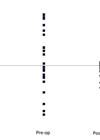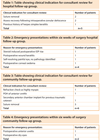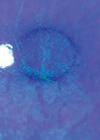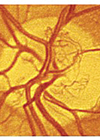Patient and public participation shapes biomedical research and access priorities in eye health
Patients, clinicians and clinician-scientists play a valuable role in shaping the future of vision research. Limited funding demands targeted research initiatives that ultimately will shape health policy and practice to secure progress in improving patient outcomes in eye health. This...
Retinopathy of prematurity treatment in the South West of England: long-term outcomes 1997-2008
Retinopathy of prematurity (ROP) is a condition that affects the developing retinal vascular system of pre-term babies. If left untreated, ROP can lead to severe visual impairment. The severe visual impairment caused by untreated ROP can be prevented by screening...
Complex Biometry Clinics: a new service development
In this article we describe a new local service development, the ‘Complex Biometry Clinic’ at Leicester Royal Infirmary. Retrospective data analysis of patients referred between October 2012 and October 2013 was performed. The aim was to provide a one-stop service...
A look into the IOL space
Advances in the design and performance of intraocular lenses (IOLs) continue to be driven by demand for better outcomes, presbyopia correction and spectacle independence, alongside a better understanding of the dynamics of the crystalline lens, newer theories of accommodation and...
Changing the post cataract surgery review pathway – is patient safety compromised?
Cataract surgery continues to be the most commonly performed elective surgical procedure in the UK, with an annual rate of approximately 4150/100,000 people over the age of 65 accounting for a significant proportion of the surgical workload of most ophthalmologists...
Is lens constant optimisation for IOLMaster indispensable in order to achieve a good refractive outcome?
A study of refractive outcomes following cataract surgery was carried out with the aim of comparing the postoperative refractive outcomes against Royal College of Ophthalmologists standards and to determine the extent of association between accuracy of intraocular lens (IOL) power...
Therapy for limbal stem cell deficiency: cell fate after limbal stem cell transplants
“The beauty of scientific research lies in that the search for answers often yields yet more questions.” A large body of evidence points to the corneoscleral limbal location as the repository of putative epithelial stem cells [1]. Thoft proposed the...
Management of proliferative diabetic retinopathy
Diabetic retinopathy is a major cause of blindness in the working-age population. Due to the worsening global epidemic of diabetes, the incidence of morbidity caused by the disease is set to increase [1]. The prevalence of diabetes in the UK...
How to examine the visual system Part 2: Accommodation, pupils, fundoscopy and additional tests
Examining the visual system can be a tricky skill for medical students to master, yet it is a task that is frequently tested in examinations. This is the second of a two-part series of articles, which together aim to improve...
Comic leaflets: an innovative method of patient education
Nowadays almost everyone has been exposed to comics, especially during childhood. In a way, this is a natural form of progression from children’s story books, which also contain words and pictures. This exposure has helped us to develop the graphic...
An eyeful of independence
Scots will decide this September whether or not Scotland should be an independent sovereign state. “As all key areas of our business are already fully devolved, it’s very much business as usual for us,” noted a spokesperson for Healthcare Improvement...
What to expect when meeting a statistician
There are a growing number of statisticians working closely with ophthalmologists. They have different training but they are driven by the same goal: to perform high quality evidence based clinical research [1,2]. In a perfect world we would simply conduct...













